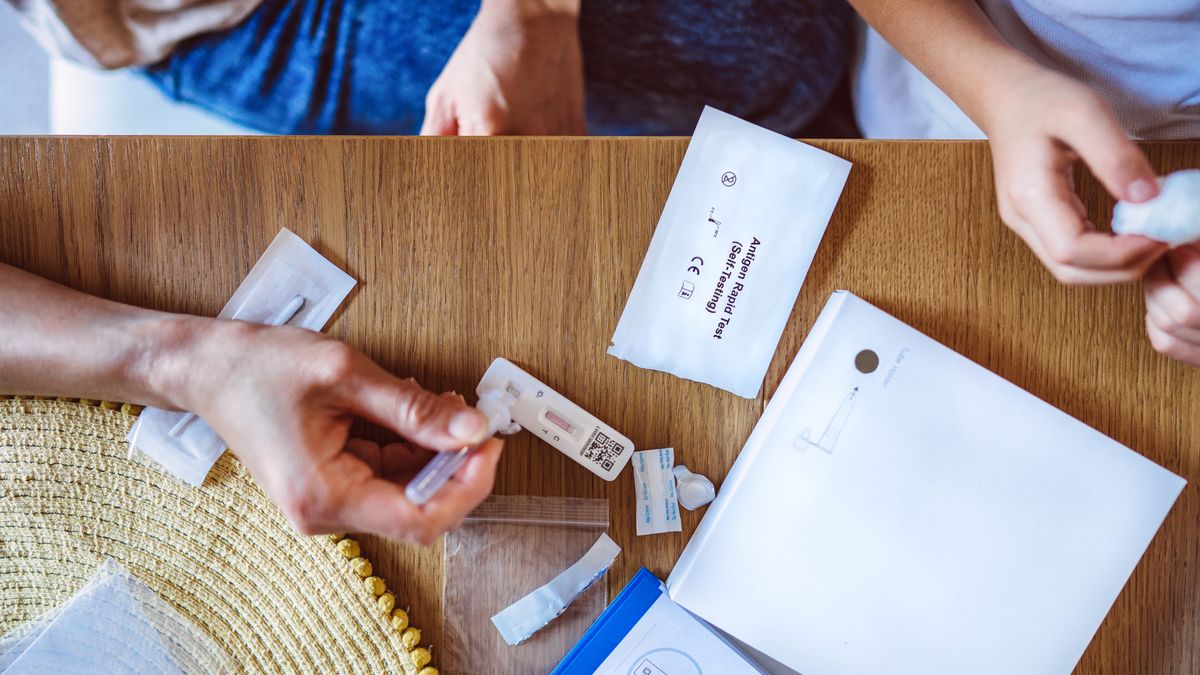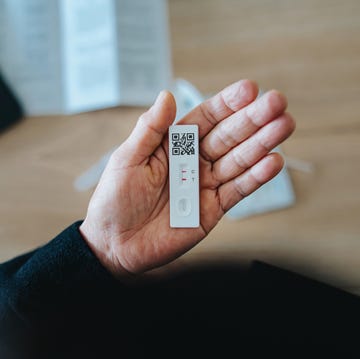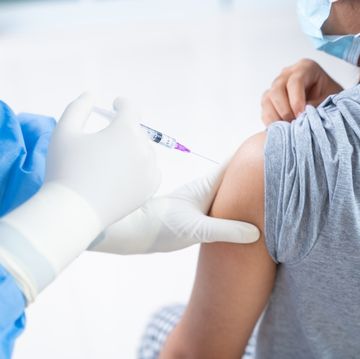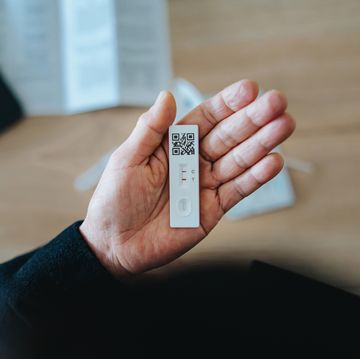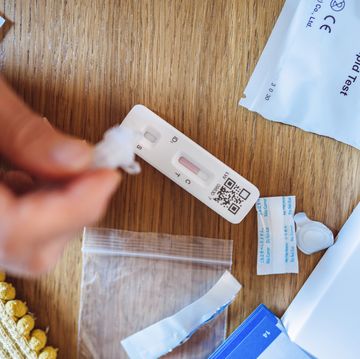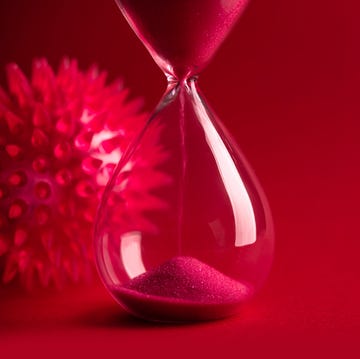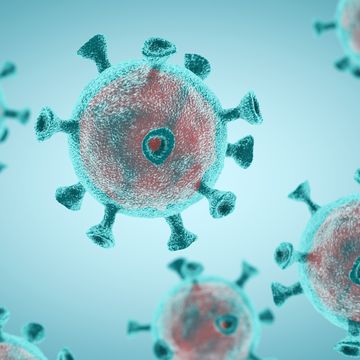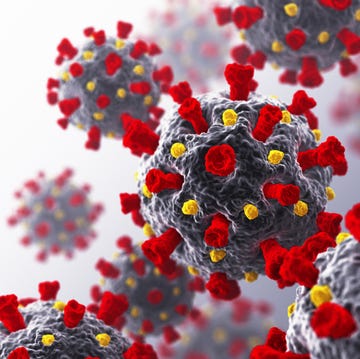At this point, you’ve probably taken a COVID test at least once and have some idea of how it all works. Most tests keep it simple: one line means it’s negative; two lines means it’s positive. But what does a faint line on a COVID test after 15 minutes mean? Are you testing positive or not?
Meet the Experts: Amesh A. Adalja, M.D. a senior scholar at the Johns Hopkins Center for Health Security; Thomas Russo, M.D., a professor and the chief of infectious diseases at the University at Buffalo in New York; William Schaffner, M.D., an infectious disease specialist and professor at the Vanderbilt University School of Medicine; Linda Yancey, M.D., an infectious diseases specialist at Memorial Hermann Hospital.
The answer is a little complicated. Here’s what a faint line on a COVID test can mean—including a very faint line on a COVID test—plus next steps to take if this happens to you.
What does a faint line on a COVID test mean?
Doctors generally agree that this means you have COVID-19. “A faint line on a COVID test means the test is positive,” says infectious disease expert Amesh A. Adalja, M.D., a senior scholar at the Johns Hopkins Center for Health Security.
This is especially true if you have been exposed to a known infection and/or are experiencing symptoms, a faint line means you have COVID, says Linda Yancey, M.D., an infectious diseases specialist at Memorial Hermann Hospital. “You can retest in 48 hours to confirm this, but a positive home test is positive even if the line is faint,” she adds.
Thomas Russo, M.D., a professor and the chief of infectious diseases at the University at Buffalo in New York, agrees. “It’s sort of like when you take a pregnancy test,” he says. “A ‘little pregnant’ is the same as being a lot pregnant.”
Why might the line be faint?
There are a few possible reasons. “The most conservative, careful interpretation is that you’re positive, but [the amount of virus in your body] is low,” says William Schaffner, M.D., an infectious disease specialist and professor at the Vanderbilt University School of Medicine.
If you are recovering from COVID, a faint line means a low level of virus is still in your system. So if you’ve had symptoms for a while, it could mean you’re coming to the end of your COVID infection. However, if you haven’t had symptoms for long or don’t have any at all, a faint line could also indicate that your infection is just starting.
The other possibility? You didn’t do the best job taking your test, which happens. “It might reflect the quality of the swab you took,” Dr. Russo says. “You may not have swabbed your nose vigorously enough,” Dr. Schaffner says. (To lower the odds of that happening, make sure you read the instructions carefully and follow them as best as possible the next time around.)
How home COVID tests work
To fully understand why this might be an issue, it’s important to go over how home COVID tests work. These tests look for the presence of a fragment of SARS-CoV-2, the virus that causes COVID-19, usually by testing specimens from your nose via a swab.
Most home COVID tests are antigen tests, which means they’re designed to quickly diagnose an active COVID-19 infection by detecting the nucleocapsid protein antigen of the SARS-CoV-2 virus. “The test detects the viral antigen that reacts to an antibody in that test cassette,” Dr. Russo says. But keep in mind that the home tests are very similar to home pregnancy tests, says Dr. Yancey. “They tend to have false negatives if the test is taken too early,” she explains.
So typically, you’ll then get results as either two lines (positive) or one line (negative).
Dr. Russo recommends looking at your test results under good lighting, just to be sure you’re getting accurate results. “You don’t want to miss a faint line, and you don’t want to ostrich and pretend it’s not there,” he says. If your lighting is sub-par, he recommends using the flashlight feature on your phone to be sure you’re viewing your results properly.
What to do after you get a faint line on a COVID test
You can go one of two ways: You can assume you’re positive, isolate, and reach out to your doctor about taking an antiviral medication like Paxlovid to lower the odds you’ll get seriously sick from COVID-19, Dr. Russo says.
If you want to be sure you’re positive, Dr. Schaffner suggests getting another COVID test—ideally from a different brand—and testing yourself again. If that’s positive, you have COVID-19, even if it’s a faint line again. If it’s negative? Wait a day and test yourself again.
Ultimately, Dr. Schaffner says, “the most conservative interpretations is, if you get a line—even if it’s faint—you’re likely to be positive.”
To protect yourself from severe illness this season, be sure to get all your shots when they become available near you. It is very important going into this year’s cold and flu season to get the COVID booster, the flu shot, and the RSV vaccine if you are over 65 or pregnant, says Dr, Yancey. “We have a wonderful number of resources against these viruses. Let’s get everyone protected!”
Madeleine, Prevention’s assistant editor, has a history with health writing from her experience as an editorial assistant at WebMD, and from her personal research at university. She graduated from the University of Michigan with a degree in biopsychology, cognition, and neuroscience—and she helps strategize for success across Prevention’s social media platforms.
